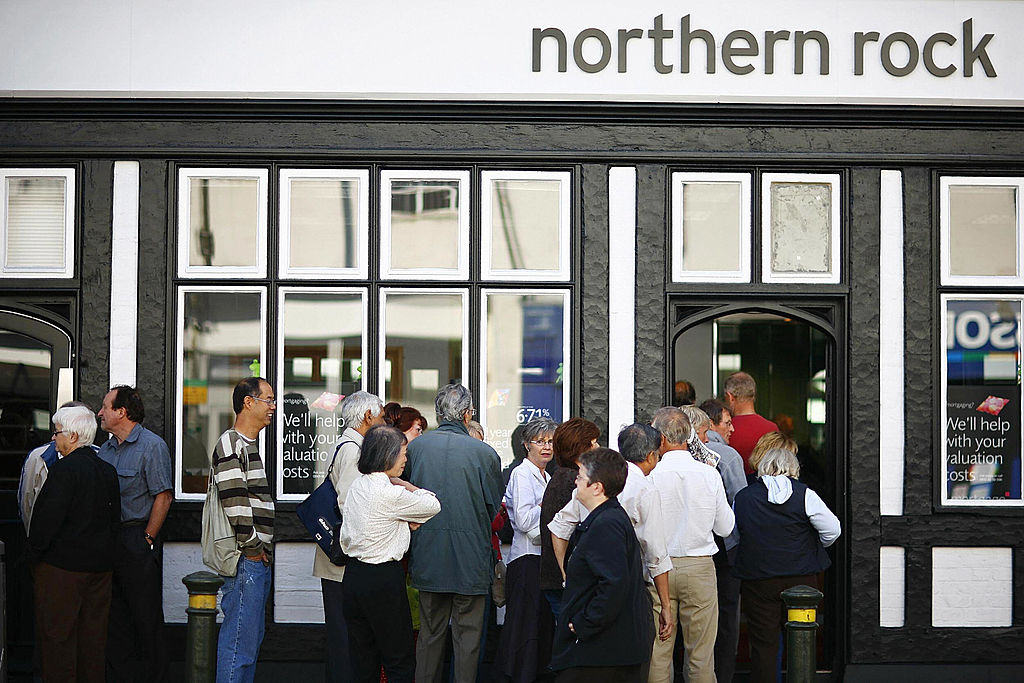Gilt yields head below zero
Yields on gilts – UK government bonds – have gone negative, meaning investors are paying the Treasury to borrow money from them.
The government last week sold a three-year gilt with a fractionally negative yield of -0.003%, meaning that investors were effectively paying the Treasury to borrow money from them. In a further sign that central banks’ quantitative easing is forcing market prices through the looking glass, the yield on the five-year gilt also went negative for the first time, hitting -0.003% at the end of last week.
Investors who buy and hold these negative-yielding bonds to maturity will make a small loss. Some hope that the global bond rally will enable them to sell them on at a capital gain, but others may simply have concluded that with the growth outlook shaky there are no better options.
Markets have been spooked by poor data, particularly April’s sluggish 0.8% inflation reading, says Paul Dales for Capital Economics. Yet the key factor is interest rates. The Bank of England has said that negative short-term interest rates are under “active review”. UK interest rates currently sit at just 0.1%. In every sense, the outlook has “all gone a bit negative”. Interest rates on much of the continent and in Japan are already below zero. If the UK follows suit then expect pensions annuities to fall and pension scheme deficits to rise, says James Coney in The Sunday Times. If you think the past decade has been a grim one for savers, “you ain’t seen nothing yet”.
MoneyWeek
Subscribe to MoneyWeek today and get your first six magazine issues absolutely FREE

Sign up to Money Morning
Don't miss the latest investment and personal finances news, market analysis, plus money-saving tips with our free twice-daily newsletter
Don't miss the latest investment and personal finances news, market analysis, plus money-saving tips with our free twice-daily newsletter
Get the latest financial news, insights and expert analysis from our award-winning MoneyWeek team, to help you understand what really matters when it comes to your finances.
Alex is an investment writer who has been contributing to MoneyWeek since 2015. He has been the magazine’s markets editor since 2019.
Alex has a passion for demystifying the often arcane world of finance for a general readership. While financial media tends to focus compulsively on the latest trend, the best opportunities can lie forgotten elsewhere.
He is especially interested in European equities – where his fluent French helps him to cover the continent’s largest bourse – and emerging markets, where his experience living in Beijing, and conversational Chinese, prove useful.
Hailing from Leeds, he studied Philosophy, Politics and Economics at the University of Oxford. He also holds a Master of Public Health from the University of Manchester.
-
 The graphene revolution is progressing slowly but surely
The graphene revolution is progressing slowly but surelyEnthusiasts thought the discovery that graphene, a form of carbon, could be extracted from graphite would change the world. They might've been early, not wrong.
-
 How Javier Milei led an economic revolution in Argentina
How Javier Milei led an economic revolution in ArgentinaFollowing several setbacks, Argentine president Javier Milei's pro-market reforms have been widely endorsed in a national poll. Britain will need the same
-
 Why Scotland's proposed government bonds are a terrible investment
Why Scotland's proposed government bonds are a terrible investmentOpinion Politicians in Scotland pushing for “kilts” think it will strengthen the case for independence and boost financial credibility. It's more likely to backfire
-
 How have central banks evolved in the last century – and are they still fit for purpose?
How have central banks evolved in the last century – and are they still fit for purpose?The rise to power and dominance of the central banks has been a key theme in MoneyWeek in its 25 years. Has their rule been benign?
-
 Buying vs renting: is is better to own or rent your home?
Buying vs renting: is is better to own or rent your home?The higher mortgage rates of recent years have actually made renting comparatively cheaper, analysis suggests. But there are hidden costs to long term renting.
-
 Is Britain heading for a big debt crisis?
Is Britain heading for a big debt crisis?Opinion Things are not yet as bad as some reports have claimed. But they sure aren’t rosy either, says Julian Jessop
-
 Why investors can no longer trust traditional statistical indicators
Why investors can no longer trust traditional statistical indicatorsOpinion The statistical indicators and data investors have relied on for decades are no longer fit for purpose. It's time to move on, says Helen Thomas
-
 How will markets react to the next Bank of England rate decision?
How will markets react to the next Bank of England rate decision?The Bank of England is due to announce its latest interest rate decision on Thursday, 2nd November, but how will markets react?
-
 Halifax: House price slump continues as prices slide for the sixth consecutive month
Halifax: House price slump continues as prices slide for the sixth consecutive monthUK house prices fell again in September as buyers returned, but the slowdown was not as fast as anticipated, latest Halifax data shows. Where are house prices falling the most?
-
 Rents hit a record high - but is the opportunity for buy-to-let investors still strong?
Rents hit a record high - but is the opportunity for buy-to-let investors still strong?UK rent prices have hit a record high with the average hitting over £1,200 a month says Rightmove. Are there still opportunities in buy-to-let?